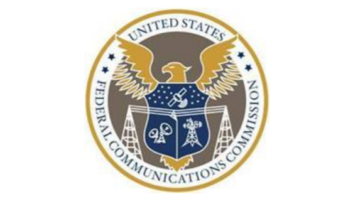Commercial radio has had its challenges in the past few decades. So when I started blogging about college radio, back in 2008, I felt it was important to remind people that there was an alternative out there for adventurous radio listeners.
The United States features an astounding range of college radio stations, available in every corner of the country. Throughout the course of profiling stations and DJs, I’ve found that college radio isn’t just alive; it’s thriving, even as the listening landscapes changes.
Some schools are selling off their radio licenses in a grab for extra funds, perhaps motivated by reports that digital music is the wave of the future. But that’s not the whole story for students, who say they are still drawn to radio, despite rumors to the contrary. From personal experience, I can understand why.

File cabinet at KUCI(FM) at University of California, Irvine, April 2012. Photo credit: Jennifer Waits. Having been a college radio DJ off and on since 1986, I’ve lived both the challenges and the magic of college radio up close. My experience included work at an all-student, campus-only carrier current station that could only be heard in the dorms and dining hall; an FM station in a conservative Midwestern town that served as the hub of alternative culture there; a staunchly indie FM station outside of Los Angeles that had a healthy listener base at a nearby prison; and a community college FM station with an underground music orientation and a big volunteer staff that included many DJs who had been on the air for decades.
The beauty of college radio is that it is accustomed to living on the edge. College radio stations throughout the ages have had to be comfortable on their toes due to tiny budgets, aging equipment and transient DJs and volunteers.
My experiences are representative of many stations, and through my blog I wanted to bring those stories to light. College radio exists on the fringes of radio culture and as a result isn’t often covered in the mainstream press. I’ve dug up news articles buried on blogs and college newspaper websites; sought out college radio-themed dissertations and conference papers; delved into the history of college radio (dating back to the 1920s).
I also began systematically to profile radio stations in each of the 50 states. In four years, I’ve managed to cross off 16 states from that Spinning Indie 50 State Tour project and I’ve also visited more than 20 college radio stations (as well as numerous commercial, community, high school, and religious stations).
I saw stations in California, Massachusetts, Pennsylvania, Illinois, Indiana, New York, and all the way across the pond in Ireland.
There are visual trappings of college radio, too. Some things I simply expect to find every time I stop by a station —sticker-covered metal cabinets, crusty couches, U.S. postal service mail tubs full of records and CDs, weird pop culture artifacts (you wouldn’t believe the number of skulls I’ve clapped eyes on).
Another generalization that rings true is that the people you meet through college radio are passionate about music and truly love hanging out at their respective stations.
However, from early on, I began to notice that college radio is far more diverse than it’s cracked up to be.
When I was a college freshman working my first radio show, all of my fellow DJs were 18-to-22-year-old students. These days, at some stations, you’d be just as likely to run into a 70-year-old non-student DJ playing free jazz and psychedelia or a 15-year-old high school student spinning noise records and Japanese pop.
In fact, many stations rely on a stable of non-student DJs to keep their schedules filled, particularly during weekends and holiday breaks. Some of these community members are alumni who have been on the air since their undergraduate days, whereas others might be radio and music enthusiasts looking for a station to call home.
There are still student-only stations, too. In some cases, especially when the station is tightly connected to a broadcasting program (like San Francisco State’s KSFS(FM) and San Jose State’s KSJS(FM), radio shows are only granted to students enrolled in radio classes.
While some stations operate more like extra-curricular clubs, others provide professional training to future commercial radio DJs. These different station orientations can have a big impact on how stations are run, how music is programmed (by the DJs or by management) and on the overall air sound.
There are free-form college radio stations where DJs have total control over music choices and playlists and there are also stations where there is a tightly formatted list of music that DJs must play. Some stations pride themselves on schedules comprised of live DJs 24 hours a day, 7 days a week, whereas others use automation to fill in the gaps when DJs don’t show up or when access to campus buildings is restricted (some schools don’t allow access late at night or during school breaks).
Some college radio stations eschew all mainstream, commercial music, asking DJs to refrain from playing anything that has ever been a Billboard hit. WZBC at Boston College even prides itself on its emphasis on music with “no commercial potential.”
Others closely follow the playlists of fellow college radio stations and mirror CMJ charts. Some have fully embraced the “digital revolution,” and have eliminated physical music libraries in favor of digital files.
At the same time, there are stations that lovingly catalog their libraries of vinyl and CDs. Foothill College radio station KFJC(FM), in Los Altos Hills, Calif., where I am a DJ, is even making room for new cassette tapes in its library. That’s in direct contrast to tiny KSMC(FM) at St. Mary’s College, where I was told the CD library was just for show since most of the DJs play music from their computers.
Although the college stations that I’ve encountered have a variety of guises, they all serve an important purpose for their students, schools and communities. For many students, college radio provides lasting memories and is a highlight of the college experience. For some, it’s a stepping-stone to a career in music or radio. And for others, it’s the beginning of a life-long love affair with noncommercial radio.
Jennifer Waits earned a master’s degree in popular culture and writes about the college radio scene for her blog Spinning Indie and about radio in general for Radio Survivor. She’s been a college radio DJ at four stations and has been on the air at KFJC(FM) since 1999.












